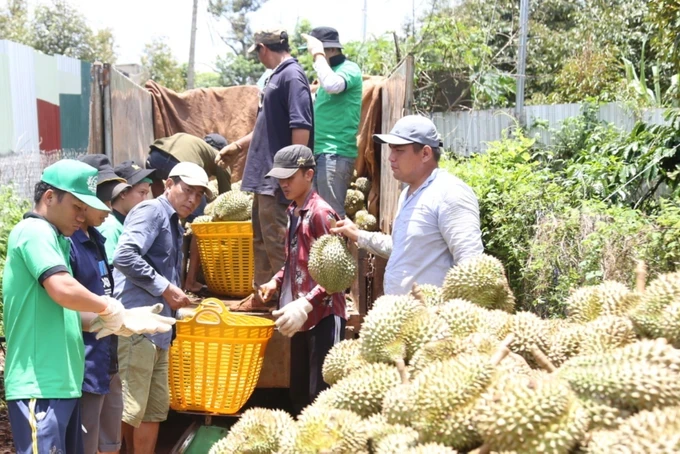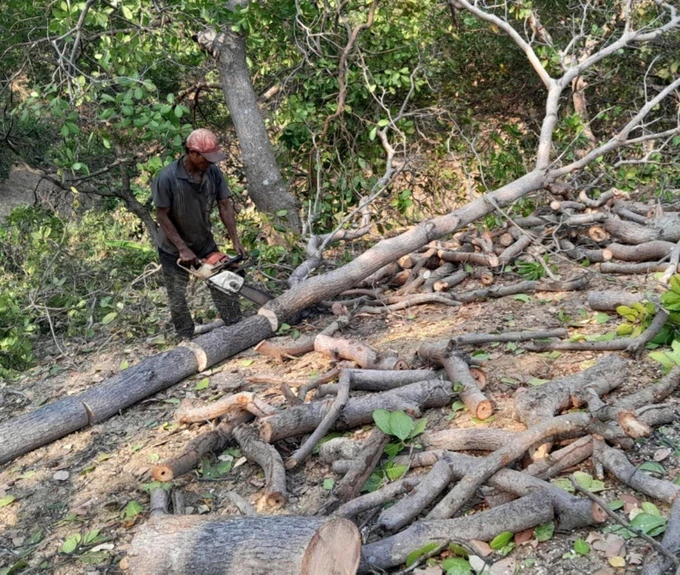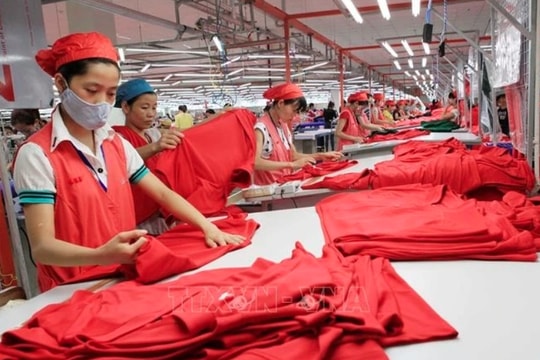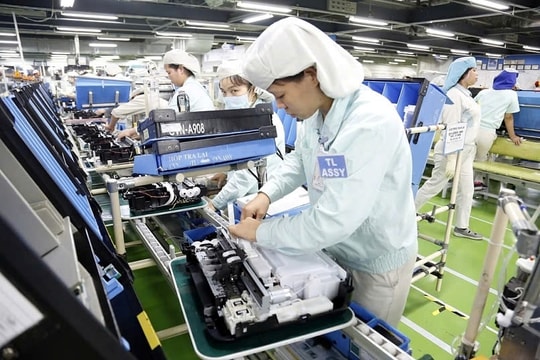
The story of farmers in Binh Phuoc Province felling their coffee, pepper, cashew, rubber trees just for durian cultivation has been alarmingly popular these days.
After many unprofitable pepper crops, farmer Nguyen Tuan Thinh from Dak O Commune of Bu Gia Map District decided to abandon 1.5ha of peppers trees and grow 200 durian trees, in hope of earning more money. Similarly, farmer Bui Van Nho in Binh Son Commune of Phu Rieng District switched from rubber trees (2ha) and cashew (1ha) to 300 Musang King durian trees.
Both explained that the profits for traditional industrial trees here like rubber, pepper, or cashew are not at all attractive now, ranging from only VND30-50 million (US$1,184-1,974) per year, not to mention their complete dependence on weather conditions and high vulnerability to pests. Meanwhile, only 5-10 durian trees can earn the same amount of revenue.
However, despite durian’s high economic values, improper cultivation practices and unsuitable growing conditions like soil contaminated with alum and salinity or unfavorable weather conditions can result in reduced durian quality and yields, affecting the overall value of the crop.
Despite warnings from agricultural experts, farmers are disregarding soil suitability and climate requirements for durian cultivation. For instance, hundreds of farming households in Dong Thap Muoi area, infamous for its high acidity soil, have felled their lime trees and destroyed their two-crop paddy fields to grow durian. This lucrative tree also appears in an unplanned manner in various places in the Mekong Delta provinces of Tien Giang, Long An, and Dong Thap.

The consequences of planting durian in unsuitable areas are evident in the experiences of farmers like 50-year-old Nguyen Van Tung in Tan Phuoc District of Tien Giang Province. Despite warnings from agricultural officials about the high acidity of the soil in his region, Tung invested heavily in durian cultivation, hoping to reap the high profits associated with the crop. However, after more than a year, his durian trees began to wilt and die, leaving him facing significant financial losses.
Statistics from Binh Phuoc Province reveal that in 2022, it had over 4,800ha of durian crop, rising to 6,000ha in a short time. The province has 65 Production Unit Codes (PUCs) for more than 2,400ha of durian, issued by the Chinese Customs Authority. As this country is importing durian in a great amount, its prices have seen considerable increases, luring many farmers to switch to this lucrative crop.
The Durian Development Plan of Tien Giang Province details that by 2025, the province should own 13,635ha of durian. Yet the real surface area for this crop in the province is now nearly 16,000ha, with an average growth rate of 7.9 percent per year. Worryingly, most of the newly developed areas for durian do not belong to the plan.
Durian cultivation has gained significant traction in the Central Highlands region, with Gia Lai Province reporting over 5,600 hectares for a yield of 44,150 tonnes and Dak nong Province approaching 10,000 hectares. Meanwhile, in Lam Dong Province, the durian acreage has reached approximately 15,000 hectares.
Dak Lak Province has emerged as a leading durian producer in Vietnam, with an impressive 32,785 hectares under cultivation. This represents a significant increase from its previous status as a relatively minor durian producer and major coffee one. China has already issued 68 PUCs for 2,500ha of durian in this province.
Vice Chairman Le Anh Trung of the Durian Association of Dak Lak Province raised his concern about market volatility and the prevalence of unregulated practices. Price fluctuations, chaotic purchasing practices, and the lack of product quality inspections have been observed in some regions. It is impossible to perform even the basic step of checking product samples of durian before selling, which is rather troublesome.
Agricultural experts said that most farmers tend to opt for any trees bringing them the highest profit, regardless of planning or warnings from professional units and state management agencies. This has raised even more concerns about long-term sustainability and potential crop failures.
Meanwhile, meeting the stringent quality requirements for durian exports to China poses a challenge for many farmers and cooperatives. Inconsistent product quality and a lack of adherence to advanced production protocols hinder market access.
Data from the Planting Department (under the Ministry of Agriculture and Rural Development) show that in 2023, the area of durian crops in Vietnam reached 131,000ha, a rise of nearly 20 percent compared to 2022. The largest area was in the Central Highlands region (accounting for 40.4 percent), followed by the Mekong Delta (at 34.6 percent), and the Southeast region (at 19.4 percent).
Seeing the potential risks of this durian planting trend, the Planting Department has issued a directive to provinces and cities in southern Vietnam, cautioning against uncontrolled and unplanned increases in durian acreage, particularly in unsuitable areas with high salinity, acidity, or water scarcity. Such practices could lead to significant losses in durian productivity and quality.






















